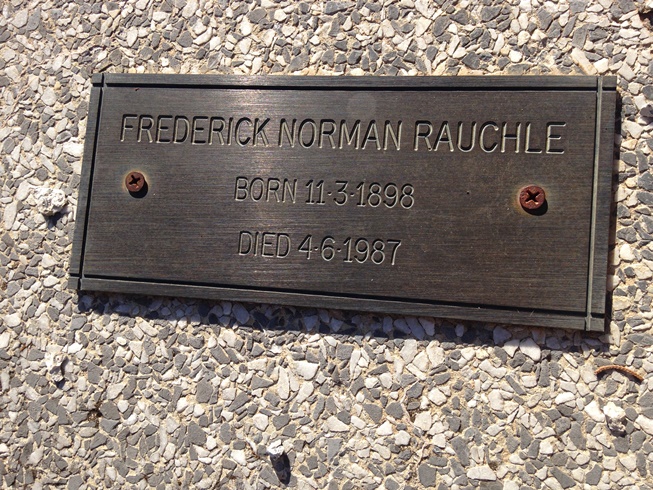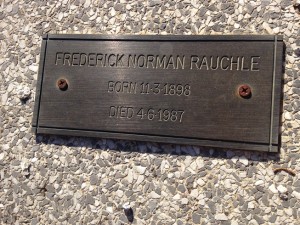Frederick Norman Rauchle received the highest award from the King of Belgium, the Croix de Guerre. His citation read:
For wonderful daring and coolness under shell fire and conspicuous devotion to duty. This NCO has done consistently good work throughout the recent campaign and has on several occasions rescued officers and men under heavy shell fire. He has always set a fine example for his comrades in action.
He was also nominated for a Military Medal:
On 4th May 1918, between Fouilloy and Villers Bretonnaux, this NCO displayed the utmost contempt for a terrific bombardment, by S.9 H.E. Shells, of recently vacated gun pits in the vicinity of which the Company is bivouacked. He rescued a badly wounded man from a wrecked dugout, and carried him away to comparative safety. It was an act of great gallantry, and a splendid example of pluck.
Frederick Norman Rauchle did not care much for school and at the tender age of 13 ran away to join the Navy. The Leader of 9 November 1913 reports that Frederick was the first recruit from Orange to join the Navy. His career there was short-lived; he deserted and joined the Army in March 1915. Frederick embarked for overseas service in Melbourne on 25 June 1915.
At age 17, Frederick was one of the youngest men to serve at Gallipoli. He was part of the 4th Field Company Engineers, who were tunnelling into the Turkish lines in October 1915. As Fred returned to camp at the end of a shift, the dugout he had been in was bombed, the blast killing all the men inside. Fred was unharmed, but was reported as killed in action. News of his “death” made its way to Orange, and the flag at his old school was flown at half-mast. Two weeks later Fred’s mother received a telegram to say that a mistake had been made and that Frederick was alive but confined to hospital in Malta.
After the evacuation of Gallipoli Frederick served in France and Belgium. The Central Western Daily of 25 April 2005 reports that Frederick saw service at the Somme, Fromelles, Bullecourt, Ypres, Passchendale, Villiers-Bretoneaux, Mont St Quentin and the Hindenberg Line; all very active theatres of war.
On 18 August 1917 Frederick was appointed to the rank of Lance Corporal, but chose to revert to the rank of Sapper two days later. On 18 February 1918 he was again appointed to rank of Lance Corporal. He returned to Australia on 2 March 1919 aboard Derbyshire.
After the war Frederick joined the civilian military and secured employment with Orange Municipal Council. In June 1924 he married Eva Catherine Hines in the Holy Trinity Church Orange. They went on to have five children: Thelma, Norma, Nita, Raymond and Frederick.
In 1937 Frederick was chosen as one of a contingent of Australian soldiers to attend the coronation of King George VI in England, thus becoming the first Australian to stand guard at Buckingham Palace.
When World War II broke out Frederick enlisted; he served as Regimental Sergeant Major of the 54th Australian Infantry Battalion for the duration of the war. He received his final discharge from the army at the age of 44.
Frederick returned to work for Orange Council. When he retired in 1963, after 43 years’ service, he was the works overseer and was responsible for about 100 workers.
Frederick Norman Rauchle died on 4 June 1987 aged 89. He was laid to rest in the family plot in the Old Church of England Portion of Orange Cemetery. He is commemorated on the Holy Trinity Church Orange Honour Roll and the Orange East Public School Honour Roll.
Frederick’s father, George Patrick Rauchle, also served in WWI.
* Sharon Jameson, 2016


